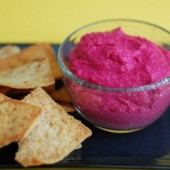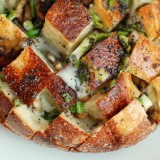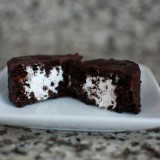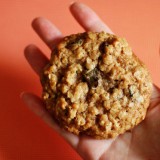Pizza Dough
As I mentioned last week, one of the things we made during our Boston bloggers class at King Arthur Flour was pizza dough. Pizza dough is one of those things that I’ve never made at home and have been wanting to for some time now.
We topped these pizzas with a small amount of sauce and fresh mozzarella prior to baking. After they came out of the oven, we topped the pizza with parmesan and basil. I love these pizza boxes they had for us to transport our pizzas!
Two Years Ago: Tiramisu Cupcakes
Three Years Ago: Caramel Mocha Cupcakes and Mussels
Pizza Dough
Yield: 2 crusts
Ingredients:
2 cups (8 oz) flour
1 1/4 tsp instant yeast
3/4 tsp salt
1 Tbsp olive oil
1/2 - 3/4 cup warm water
Directions:
In a large bowl, combine the dry ingredients.
Stir in the olive oil.
Stir in the water, adding the last few tablespoons slowly to see if they are needed - a wet dough is preferable although more challenging to work with.
Turn the dough out onto work surface to knead until smooth and shiny. Be sure to follow the fold, roll, turn, method and be gentle with the dough. Try not to incorporate any more flour than is absolutely necessary.
Put dough into an oiled bowl and cover. Allow to rise until it has doubled in volume.
Turn out the dough onto a floured surface to shape the pizza.
Divide the dough into two pieces.
Begin by patting one of the pieces of dough into a disk as thin as possible until it resists stretching. Let the dough rest for a minute before picking it up with one hand and holding it vertically above your work space. Rotating the disk of dough above yoursurface, begin stretching the edges until the disk of dough is large enough to drape over the back of the knucles of both hands.
Your hands should be palm down and parallel to your work surface. Begin roatting the dough in one direction over the surface of your knuckles, slowly moving your hands wider apart and using a slight flipping motion to move the dough. This action provides tension against the dough to fully stretch it. Try not to provide so much tension that the dough tears; although, little holes can always be patched.
If the dough resists any of these steps put it down on the floured surface, cover it and let it rest for a minute or two until it relaxes again.
Recipe from King Arthur Flour













 I am Jen the Beantown Baker. Engineer by day and baking maven by night. Hubby serves as my #1 fan and official taste tester. We got hitched back in 2006. Barefoot. In the sand. With the waves crashing behind us. It was one of the best decisions we’ve ever made.
I am Jen the Beantown Baker. Engineer by day and baking maven by night. Hubby serves as my #1 fan and official taste tester. We got hitched back in 2006. Barefoot. In the sand. With the waves crashing behind us. It was one of the best decisions we’ve ever made. 







That color is unreal! I’ve made beet green hummus but I’ll have to try using the actual beets sometime!
wow that is pink!! I’ve been trying to think of a recipe for natural pink too instead of just food coloring but I can’t figure anything out
What a great idea – it’s such a beautiful color!
Pink is my favorite color! I’m not a fan of beets, but I would make this just for how cool it looks. 🙂
Hello,
We bumped into your blog and we really liked it – great recipes YUM YUM.
We would like to add it to the Petitchef.com.
We would be delighted if you could add your blog to Petitchef so that our users can, as us,
enjoy your recipes.
Petitchef is a french based Cooking recipes Portal. Several hundred Blogs are already members
and benefit from their exposure on Petitchef.com.
To add your site to the Petitchef family you can use http://en.petitchef.com/?obj=front&action=site_ajout_form or just go to Petitchef.com and click on “Add your site”
Best regards,
Vincent
petitchef.com
You even made hummus look amazing!! That color is stunning! How pretty would that look on a table at a party?
How fun – I love beets and the fuchsia is such a conversation piece!
This is SO pretty!! And perfect for Breast Cancer Awareness Month! I’m sure it’s delicious too 🙂
Sues
I have made a similar recipe in the past and when serving, place a swipe of creme fraiche in the center, makes it look even more dynamic! Great stuff, great way to get people to eat beets!
That is so PINK! And so CREATIVE!!!! Love it, love it!! I’ve never had beet hummus either…but it actually sounds delicious…
This looks delicious! It reminded me of borscht…yum!